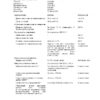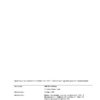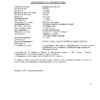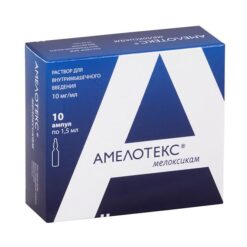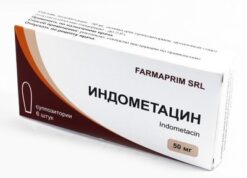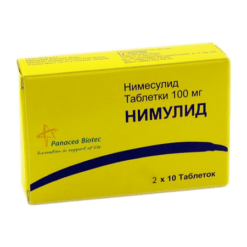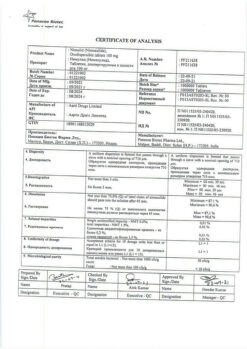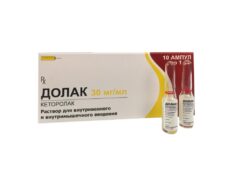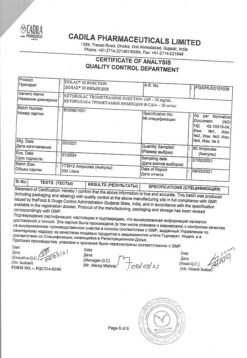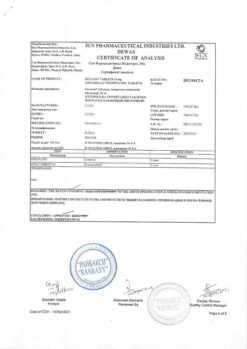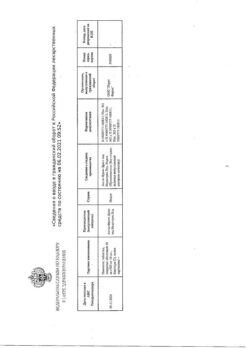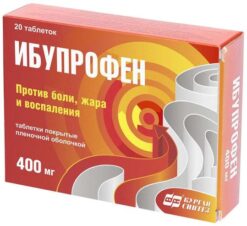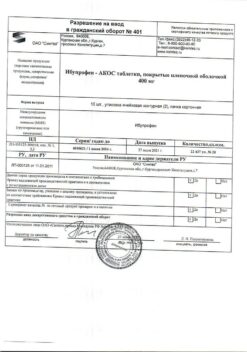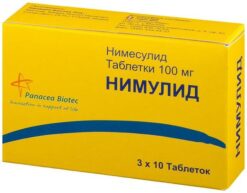No products in the cart.
Xefocam, 8 mg 10 pcs
€11.12 €9.27
Description
Xefocam is an NSAID of the class of oxycams.
It has a pronounced analgesic and anti-inflammatory effect.
Lornoxicam has a complex mechanism of action, which is based on inhibition of prostaglandin synthesis due to inhibition of cyclooxygenase isoenzymes activity. In addition, lornoxicam inhibits the release of free oxygen radicals from activated leukocytes.
The analgesic effect of lornoxicam is not associated with narcotic action.
The drug XEFOCAM has no opiate-like effect on the central nervous system (CNS) and unlike narcotic analgesics it does not inhibit respiration and does not cause drug dependence.
Pharmacokinetics
Lornoxicam is rapidly and almost completely absorbed from the gastrointestinal tract (GIT) after oral administration.
With this, maximum plasma concentrations are reached after about 1-2 hours.
Eating decreases the maximum concentration (C max) by 30% and increases the time to reach maximum concentration (Ttah) up to 2.3 hours. The absolute bioavailability of lornoxicam is 90-100 %. Lornoxicam is present in plasma mainly in unchanged form and, to a lesser extent, in the form of hydroxylated metabolite, which has no pharmacological activity. Binding of lornoxicam with plasma proteins, mainly albumin fraction, is 99 % and does not depend on its concentration.
The elimination half-life is on average 4 h and does not depend on the drug concentration. Lornoxicam is completely metabolized in the liver. CYP2C9 isoenzyme is involved in metabolism. About 1/3 of metabolites are excreted by kidneys and 2/3 – in bile. No significant changes in lornoxicam pharmacokinetics were found in elderly patients and patients with renal or hepatic impairment.
Indications
Indications
Short-term treatment of pain syndrome of different origin.
Symptomatic therapy of rheumatic diseases (rheumatoid arthritis, osteoarthritis, ankylosing spondylitis, joint syndrome with exacerbation of gout, rheumatic soft tissue lesions).
Active ingredient
Active ingredient
Composition
Composition
Active ingredient:
Lornoxicam 8 mg;
Associates:
magnesium stearate, povidone (K25),
sodium croscarmellose,
cellulose,
lactose monohydrate;
Shell:
Macrogol (6000),
Titanium dioxide, E-171,
Talc,
Hypromellose.
How to take, the dosage
How to take, the dosage
Orally, before a meal, with 200 ml of water;
In moderate to severe pain syndrome – 8-16 mg,
If necessary, in the first 24 hours extra 16 mg, thereafter – 8 mg 2 times a day.
In inflammatory diseases in adults the initial dose is 12 mg and then 8-16 mg/day in 2-3 doses.
The maximum daily dose is 16 mg.
Interaction
Interaction
Reduces the effectiveness of uricosuric drugs, increases the effect of anticoagulants, antiaggregants, fibrinolytics, the side effects of MKS and GCS, estrogen;
decreases the effect of hypotensive drugs and diuretics; increases the hypoglycemic effect of sulfonylurea derivatives.
Increases the blood concentration of Li+ drugs, methotrexate.
Decreases renal clearance of digoxin.
Cimetidine increases the plasma concentration of lornoxicam.
Antacids and colestyramine decrease absorption.
Myelotoxic drugs increase the manifestations of hematotoxicity of the drug.
Special Instructions
Special Instructions
The gastrointestinal tract should be monitored during treatment to prevent ulcerogenic effects or gastrointestinal bleeding.
The simultaneous administration of omeprazole or H2-histamine receptor blockers, synthetic Pg analogues (misoprostol) can reduce the risk of ulcerogenic effects.
The peripheral blood count and the functional state of liver and kidneys must be monitored during treatment.
In patients with renal insufficiency (creatinine concentration in plasma 150-300 µmol/l) the dosage adjustment and regular monitoring of renal function are required.
If it is necessary to determine 17-ketosteroids, the drug should be discontinued 48 hours before the study.
It retains Na+, K+, Li+ and water in the body, which may worsen the course of arterial hypertension and CH, and in persons taking Li+ preparations, increase the severity of the side effects of Li+ salts.
Patients who are elderly and have arterial hypertension need regular BP control.
During the treatment, caution should be exercised while driving and engaging in other potentially dangerous activities requiring increased concentration and rapid psychomotor reactions.
Contraindications
Contraindications
Hypersensitivity (including to ASA and other NSAIDs), erosive-ulcerative gastrointestinal lesions (gastric and duodenal ulcers, ulcerative colitis) in the acute stage, bronchial asthma, severe CHF, hypovolemia, hypocoagulation (including hemophilia, hemorrhagic diathesis, thrombocytopenia). hemophilia, hemorrhagic diathesis, thrombocytopenia), severe hepatic and/or renal failure, glucose-6-phosphate dehydrogenase deficiency;
Cerebral hemorrhage (including suspected), pregnancy, lactation, age under 18 years (no clinical experience).
C Caution.
Erotic ulcerative lesions and gastrointestinal bleeding (in anamnesis), moderately expressed renal insufficiency, conditions after surgical interventions, age older than 65 years, body weight less than 50 kg.
Side effects
Side effects
Gastrointestinal and liver disorders: dyspepsia, abdominal pain, dry mouth, stomatitis, nausea, vomiting, heartburn, diarrhea; esophagitis, gastritis, erosive and ulcerative lesions of the mucosa of the stomach and intestines including. with perforation and bleeding, constipation, flatulence, melena, impaired liver function, increased liver transaminases;
Nervous system disorders: Headache, dizziness, somnolence, sleep disturbances, depression, agitation, tremor, aseptic meningitis, paresthesias;
Skin and subcutaneous fatty tissue disorders:edema syndrome, ecchymoses, skin rash, itching, urticaria, alopecia, Stevens-Johnson syndrome, Lyell syndrome, angioedema;
Urinary system disorders: dysuria, decreased cpubic filtration, interstitial nephritis, glomerulonephritis, papillary necrosis, nephrotic syndrome, peripheral edema, acute renal failure;
Senses: tinnitus, visual disturbances;
Cardiovascular system: development or worsening of heart failure, tachycardia, increased blood pressure (BP);
Hematopoietic and hemostatic system disorders: agranulocytosis, leukopenia, anemia, thrombocytopenia, increased bleeding time;
Respiratory system: pharyngitis, rhinitis, dyspnea, cough, bronchospasm;
Other: anorexia, increased sweating, weight changes, arthralgia, myalgia.
Overdose
Overdose
Symptoms: increased side effects on the CNS and digestive system, acute renal failure.
Treatment: gastric lavage, activated charcoal, symptomatic therapy. Dialysis is ineffective.
Similarities
Similarities
Additional information
| Shelf life | 5 years |
|---|---|
| Conditions of storage | At 15-25 °C |
| Manufacturer | Takeda GmbH, Germany |
| Medication form | pills |
| Brand | Takeda GmbH |
Related products
Buy Xefocam, 8 mg 10 pcs with delivery to USA, UK, Europe and over 120 other countries.




